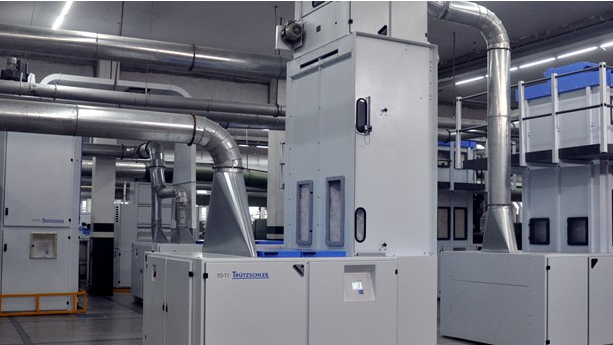Russia Rushes To Develop Domestic Technical Textile
Russia has moved on since the dissolution of the United Soviet Socialist Republic in December 1991. The country is no more globally isolated and is working on developing international trade relations to boost its economy. The country’s textile and apparel imports in 2013 were nearly US$ 14 billion with US$ 5 billion respectively including exclusively textile products. Nevertheless, the beginning of 2015 marked a steep decline of 25-35 per cent in the Russian clothing retail market, but the textile sector is predicted to grow at about 3.5-4 per cent by the end of the year. According to Y-Consulting analysts, in terms of value, textile is likely to reach 3.21 trillion rubbles or US$ 60.9 billion by the end of current financial year. Unfortunately, with textile retail in jeopardy, Russia has taken steps to ensure that it stays in the competition at the global level. Russia has seen many huge global retail brands exiting its market. These include New Look, Esprit, River Island and OVS, and as a result, the country is now focusing on its technical textile sector.
Technical matter
The current market of technical textiles in Russia relies on imports. The contribution of domestic manufacturers is estimated to be merely 17 per cent of the total market. Nevertheless, with Russia’s growing automotive sector, healthcare and construction industry, the internal demand for technical textile will rise. One of Russia’s leading producers of technical textiles and nonwovens, Balashov Textile Mill (Baltex), will invest US$ 200 million for expansion of the production of polyamide fibres and fabrics over the next few years. Other leading groups like Kuibyshevazot, Kurskhimvolokno and BTK Group have also declared expansion plans in Russia.
With China and other importers dominating the global as well Russian technical textile market, there is an urgent need to develop and expand domestic technical textile production for Russia. The consumption of technical textile is also on a constant rise. In 2012, Russia consumed 68.5 billion rubbles of technical textiles. Technical textile turnover is predicted to register Compound Annual Growth Rate of nine per cent between 2015 and 2018. The government plans to raise the contribution of domestic technical textiles to 80 per cent by 2020.
Taking chances
The leading domestic textile manufacturers are making attempts to expand textile business, which means dabbling in technical and nonwoven textiles. The continuous rise in global cotton prices has resulted in a gradual increase of overall cost of final textile product for Russia, as the country imports cotton from its neighbouring nations like Uzbekistan. Analysts in Russia believe that the shift towards technical textile will augur well for the Russian domestic textile industry.
According to Russia’s largest textile manufacturer Mega Holding’s owner Vasily Gushchin, “The Russian textile industry will only survive in the case of reorientation to fundamentally different products, (whose manufacturing is) associated with lower production costs and more stable demand than those observed in the case of cotton made products.”
Currently, Russia uses about 200,000 tons of man-made fibre that is chiefly imported from Korea, China and Belarus. The country’s own production of man-made fibre is limited even though it has adequate raw material base for the production of polyester
We buy and sell textile machinery

Leave a Reply
You must be logged in to post a comment.